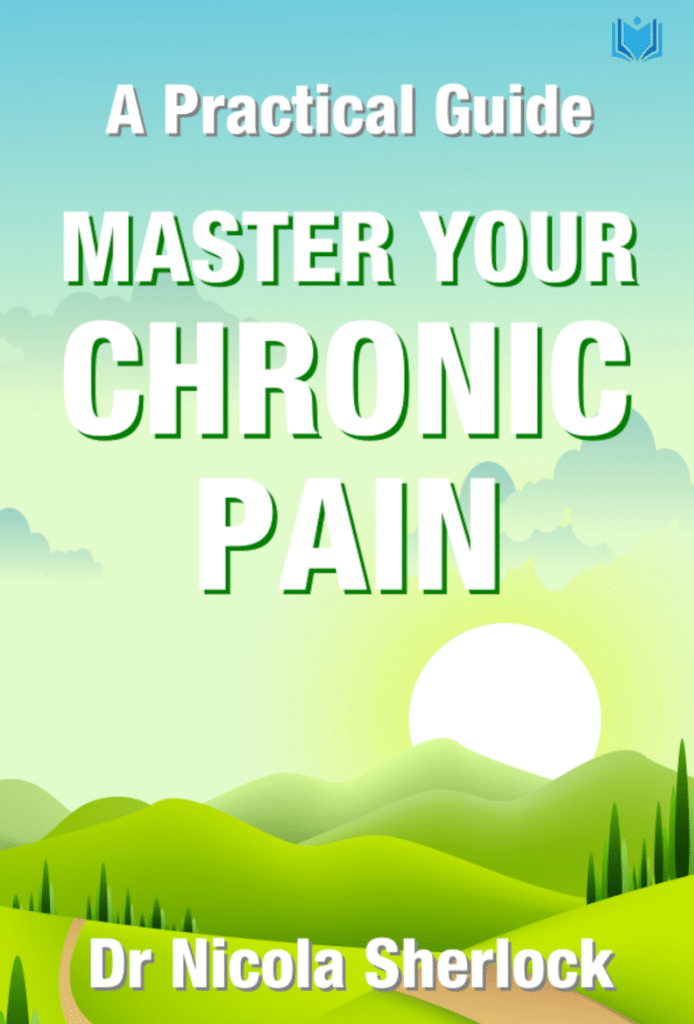Taken from Chapter 1 of Master Your Chronic Pain by Dr Nicola Sherlock – a leading specialist in pain management for more than 20 years.
Turning Up and Down the Chronic Pain Volume Dial
Scientists can be heard saying that ‘our nervous system is plastic’, by which they mean that it can adapt and change. This ‘neuroplasticity’ is illustrated when a person is recovering from a stroke. After a stroke, brain cells can regenerate, re-establish, and rearrange neural connections in response to the damage caused by the stroke. This is what happens when people who have suffered a stroke recover quite well, even after they initially lose the ability to move certain body parts or speak. The nervous system can adapt and change.
With regard to persistent pain, it has been shown that the more you understand your pain, and practise the skills that help in its management, the more your nervous system can adapt and change – in a good way. Now that we know that pain signals are released by our bodies to respond to what it believes to be a ‘threat’, reassuring our brains that the level of threat is minimal should help to manage the pain.
There are several other ways in which we can turn down the pain volume:
> Very gradual increases in activity and exercise levels can turn the volume down on your pain. When you exercise, your body releases chemicals called endorphins. These endorphins trigger a positive feeling in the body, similar to morphine. The endorphins also interact with the receptors in your brain and reduce your perception of pain. If we can release more of the chemicals that feel good, we are giving our brain information that there is less threat. This reduction in threat can turn down the volume of your pain. I fully appreciate that when you live with persistent pain, it is not easy to become more active or increase your exercise level, so I have dedicated another chapter (Chapter 4) of this book to this.
> Understanding and education about pain are very helpful to turn the volume down on your pain.
> A large body of research evidence has shown that mindfulness meditation can turn the volume down (I have written more about that in Chapter 6).
> The appropriate pacing of activity can turn down the volume (and Chapter 5 is all about that).
> Relaxation can ‘wind down’ the nervous system and dampen pain messages.
> Engaging in hobbies can distract and turn the volume down.
> Socialising and having fun with family and friends can dampen down pain messages.
On the other hand, there are also things that can turn the volume up on your pain:
> Stress can turn the volume up on your pain.
> Anxiety about your pain can make your pain worse.
> Anxiety about life in general (for example, how you are going to pay your mortgage), can turn up the volume on your pain.
> Low mood and depression have been shown to turn the volume up.
> Lack of sleep makes pain worse.
> Feeling angry and frustrated can amplify pain messages.
This is just a flavour of some of the things we have learned about pain management in recent years. These topics – and what you can actively do to manage your chronic pain – more will be explored in greater detail throughout this book.
***
Learn more about how you can manage your chronic pain with Dr Nicola Sherlock’s new book:
PROLOGUE
INTRODUCTION
HOW TO USE THIS BOOK
CHAPTER 1: UNDERSTAND YOUR PAIN
CHAPTER 2: FIND YOUR WHY
CHAPTER 3: BECOME AWARE OF YOUR INNER VOICE AND GET TO KNOW YOUR PASSENGERS
CHAPTER 4: GRADUALLY BECOME MORE ACTIVE
CHAPTER 5: BECOME A RULE BREAKER
CHAPTER 6: BECOME MORE MINDFUL
CHAPTER 7: UNDERSTAND STRESS AND ANXIETY
CHAPTER 8: TECHNIQUES FOR MANAGING ANXIETY AND STRESS
CHAPTER 9: LOW MOOD AND DEPRESSION
CHAPTER 10: MANAGE YOUR MOOD
CHAPTER 11: SLEEP BETTER
CHAPTER 12: EAT WELL AND MANAGE EMOTIONAL EATING
CHAPTER 13: MAINTAIN GOOD RELATIONSHIPS
CHAPTER 14: PUTTING IT ALL TOGETHER
For a complete Table of Contents, click on the book cover

